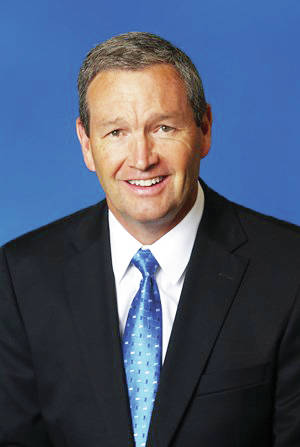Barnhart expects future direction on NIL, transfer portal within college athletics
Published 3:44 pm Wednesday, April 3, 2024

Mitch Barnhart
|
Getting your Trinity Audio player ready...
|
Kentucky athletics director Mitch Barnhart anticipates changes within the landscape of college athletes in the near future.
Barnhart touched on the subject of name, image and likeness and expects some direction when it comes to rules and regulations regarding NIL to help bring consistency within the rules.
“Every school has approached it differently,” he said. “That’s why my hope is this is going to be a short-term solution because, at some point in time, in the next 18-24 months, there’s going to be some direction for all of college athletics about how we get this thing in line.”
The solution, he said, won’t be an easy task, but hopes things will be streamlined within college athletics.
“It may be something we have to ask for, but I don’t know how it’s going to end,” he said. “I would hope in the next 18 to 24 months we get some help from some place and I don’t know what that is. Don’t ask me to define it because I couldn’t tell you.”
Currently, Barnhart said UK athletics and its NIL guidelines “falls under one umbrella,” which he calls a “pillar approach.” Men’s and women’s basketball each have their own NIL office, while the other sports fall under the same leadership and “they’ve already got that in place.”
“We’ve worked through our four or five collectives and that’s been good and it’s been consistent ,” he said. “Every program has done it a little differently and our coaches have been successful.”
As for the transfer portal, Barnhart said “finding consistency in the rules would be helpful.” Kentucky coach John Calipari has been in favor of playing four years in a five-year period, thus eliminating multiple transfers by one student-athlete during their respective careers.
“Finding a way to help young people make really good decisions would be helpful,” Barnhart said. “I think you got a lot of folks making really difficult decisions, and I don’t know if that’s in their betterment.”
He added that he agrees that student-athletes need to have choices, but with limitations.
“I also think that teaching young people how to work through situations teaches them how to do things later on in life,” he said. “You’re not going to get to transfer from every job you don’t like. I’ve had a couple jobs where I went back and go, boy, I’d like to transfer out, but you know, and it just didn’t work out so good. I think maybe I should have just stayed and worked through it.”
Barnhart also has stayed true to his roots during his tenure at Kentucky and says he will continue his stance that college athletics is about education and competition.
“I’m not relenting on either one of those,” he said. “I don’t care what the transfer portal says or what the NIL says. It is about those two pillars of our heartbeat, and we’re going to do those two things well.”
Through the changes of the past decade, Barnhart credits Southeastern Conference Commissioner Greg Sankey and Tony Petitti for being ahead of the curve within their leadership positions amid an era of change.
“They’re good people who have bright minds,” Barnhart said. “I think what what has been said is, ‘we don’t want to separate ourselves, but we want to lead.’ I think that’s really a difference there. We’re not interested in, you know, separation that doesn’t help college athletics. “





